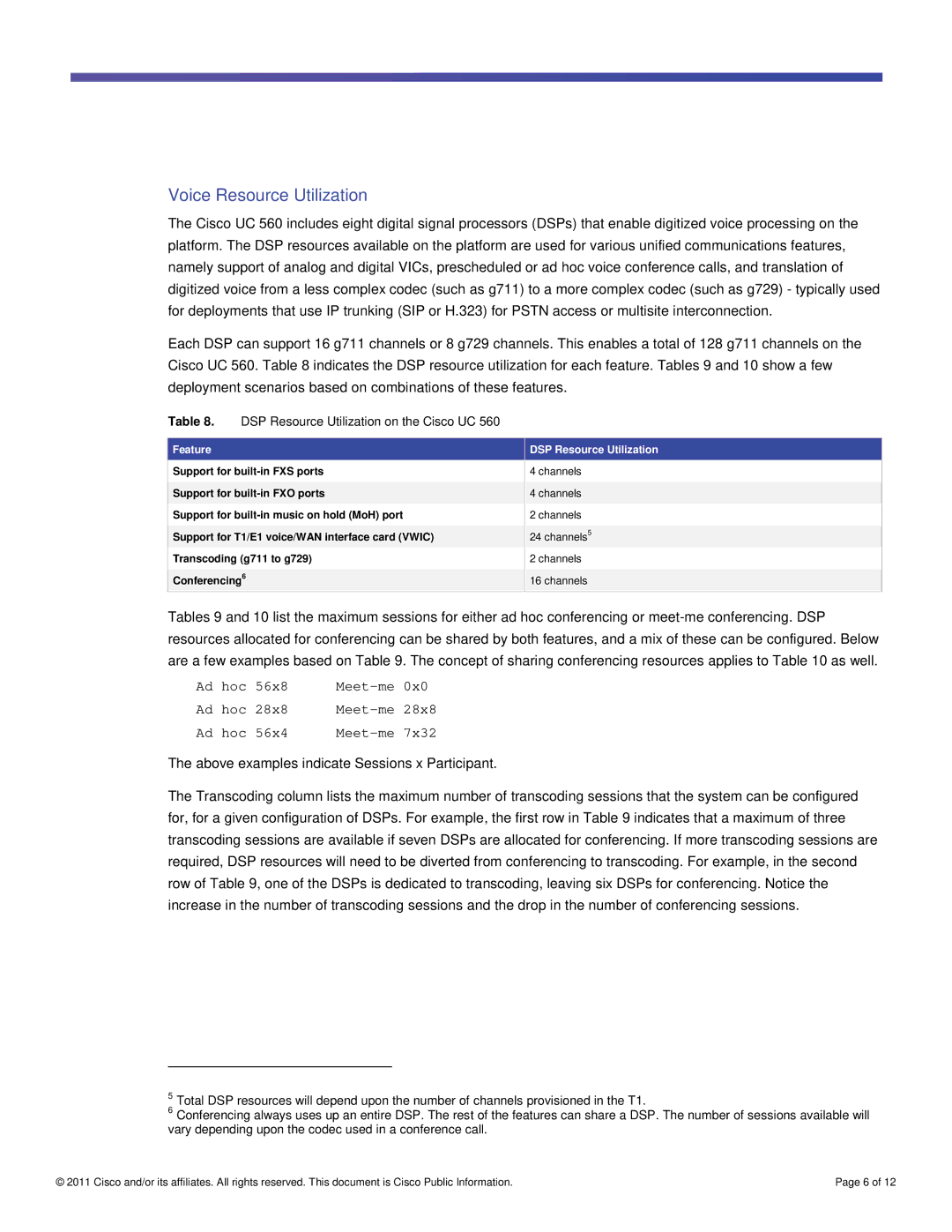
Voice Resource Utilization
The Cisco UC 560 includes eight digital signal processors (DSPs) that enable digitized voice processing on the platform. The DSP resources available on the platform are used for various unified communications features, namely support of analog and digital VICs, prescheduled or ad hoc voice conference calls, and translation of digitized voice from a less complex codec (such as g711) to a more complex codec (such as g729) - typically used for deployments that use IP trunking (SIP or H.323) for PSTN access or multisite interconnection.
Each DSP can support 16 g711 channels or 8 g729 channels. This enables a total of 128 g711 channels on the Cisco UC 560. Table 8 indicates the DSP resource utilization for each feature. Tables 9 and 10 show a few deployment scenarios based on combinations of these features.
Table 8. DSP Resource Utilization on the Cisco UC 560
Feature
Support for
Support for
Support for
Support for T1/E1 voice/WAN interface card (VWIC) Transcoding (g711 to g729)
Conferencing6
DSP Resource Utilization
4channels
4channels
2channels
24channels5
2channels
16channels
Tables 9 and 10 list the maximum sessions for either ad hoc conferencing or
Ad hoc 56x8 |
| ||
Ad hoc | 28x8 | 28x8 | |
Ad hoc | 56x4 | 7x32 | |
The above examples indicate Sessions x Participant.
The Transcoding column lists the maximum number of transcoding sessions that the system can be configured for, for a given configuration of DSPs. For example, the first row in Table 9 indicates that a maximum of three transcoding sessions are available if seven DSPs are allocated for conferencing. If more transcoding sessions are required, DSP resources will need to be diverted from conferencing to transcoding. For example, in the second row of Table 9, one of the DSPs is dedicated to transcoding, leaving six DSPs for conferencing. Notice the increase in the number of transcoding sessions and the drop in the number of conferencing sessions.
5Total DSP resources will depend upon the number of channels provisioned in the T1.
6Conferencing always uses up an entire DSP. The rest of the features can share a DSP. The number of sessions available will vary depending upon the codec used in a conference call.
© 2011 Cisco and/or its affiliates. All rights reserved. This document is Cisco Public Information. | Page 6 of 12 |
